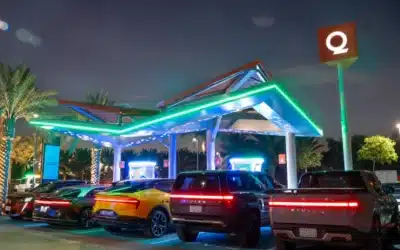
Kazunari Kusunoki has taken an unusual path into Japan’s automotive industry. The founder of KG Motors began as a YouTube content creator, building an audience through transparency and storytelling. Now he is using that same approach to launch the mibot, a single-seat electric vehicle aimed at Japan’s narrow streets and aging infrastructure.
How the founder’s background shaped the mibot
Born in 1981 in Higashihiroshima, Kusunoki says his home environment shaped his views on mobility. Narrow streets, limited parking, and declining rural public transport convinced him that “cars are simply too big” for many parts of Japan. The ageing population added urgency. He set out to design a small, affordable EV for everyday tasks, not long-distance travel.
Kusunoki is not a formally trained automotive engineer. However, he ran an auto-parts supplier before starting KG Motors. Using his network and online presence, he recruited engineers from across Japan’s motorcycle and small-vehicle sectors. Specialists contributed to bodywork, suspension, and EV control systems, helping to turn a concept into a production-ready model.
A creator’s approach to vehicle development
KG Motors has made its development process unusually public. The company releases frequent videos showing prototype work, winter testing on frozen Hokkaido roads, and behind-the-scenes challenges. This openness is intentional. By sharing progress and setbacks, Kusunoki builds trust with potential buyers and partners, while keeping an engaged online community.
Safety is a central theme. Small EVs like the mibot have fewer regulatory crash-test requirements than larger cars, yet KG Motors chose to carry out its own crash programme. The company has published video of these tests, alongside explanations from Kusunoki and his development lead. They describe the use of computer simulations, energy-absorbing design, and external technical support to improve occupant protection.

Kazunari Kusunoki, from his Facebook page.
The mibot’s specifications and market positioning
The mibot is designed for one occupant. It has a modest driving range suited to short city trips, charges from a standard Japanese household socket, and includes air conditioning, a heated seat, over-the-air software updates, and small cargo space. KG Motors has stated a target price around one million yen, making it one of the least expensive EVs in Japan.
This pricing, combined with its compact design, has generated strong media interest. Reports say pre-orders have been encouraging, with attention from both urban commuters and rural residents looking for practical local transport. KG Motors has presented production targets and a gradual ramp-up toward limited series manufacturing in the mid-2020s.
Challenges ahead for KG Motors
Turning online enthusiasm into sustained sales will be difficult. Scaling production while maintaining quality and safety is a major hurdle. Regulatory standards for this type of vehicle are still evolving. Buyers accustomed to multi-seat cars may question its crash safety, comfort in mixed traffic, and resale value.
Large automakers also enjoy advantages in supplier relationships, financing, and distribution. KG Motors will need to find partnerships or focus on niche markets to compete effectively.
Testing a new route into mobility
The mibot is not designed to replace all vehicles. Instead, KG Motors presents it as one option in a broader set of mobility solutions for Japan’s changing demographics and infrastructure. Compact size, simple charging, and affordability are the pillars of the design.
Kusunoki’s journey from YouTube to EV manufacturing is a case study in how non-traditional backgrounds can bring fresh ideas into the industry. The mibot is both a technical product and a social experiment, testing whether openness, community engagement, and targeted design can carve out a sustainable place in Japan’s mobility landscape.











